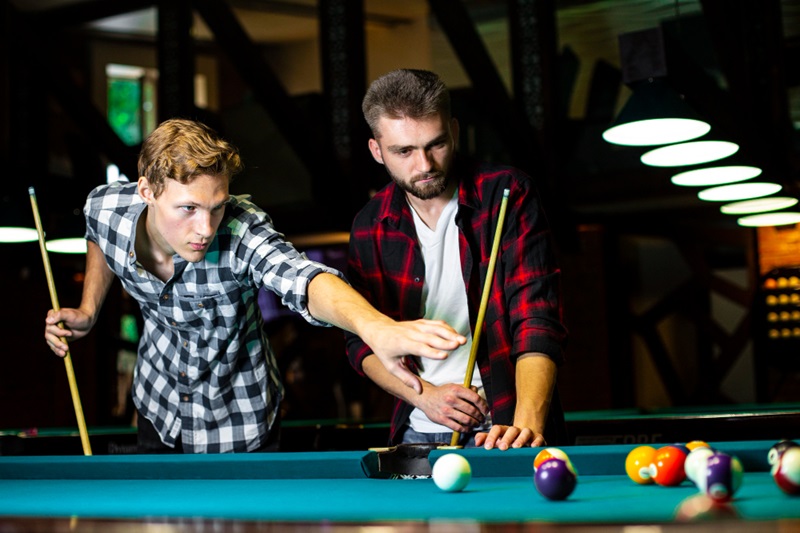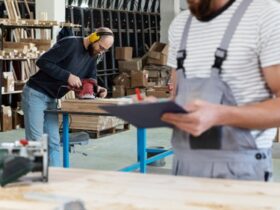Your pool cue is more than just a piece of equipment—it’s an extension of your skills, style, and dedication to the game. Whether you’re a casual player or a seasoned professional, proper care of your pool cue is essential to ensure its longevity and maintain peak performance. This guide will walk you through key maintenance tips to keep your pool cue in top condition for years to come.
1. Regular Cleaning
One of the simplest yet most effective ways to maintain your pool cue is by keeping it clean. Over time, dirt, chalk residue, and oils from your hands can build up on the cue, affecting its feel and performance. Here’s how to keep your cue clean:
- Shaft Cleaning: The shaft, being the part of the cue that gets the most contact, needs regular cleaning. Use a cue-specific cleaner or a slightly damp cloth to wipe down the shaft after each session. Avoid using household cleaners, as they can damage the wood. After wiping, use a dry cloth to remove any moisture.
- Tip Maintenance: The tip is where all the action happens, so keeping it in good condition is crucial. Use a tip shaper or sandpaper to maintain its shape and texture. This helps in retaining the tip’s ability to hold chalk and apply spin effectively.
- Butt Cleaning: The butt of the cue also requires attention, especially if it has a high-gloss finish. Use a soft, dry cloth to wipe it down, and avoid using abrasive materials that could scratch the surface.
2. Proper Storage
How you store your pool cue can significantly impact its longevity. Exposure to extreme temperatures, humidity, and improper positioning can lead to warping, cracks, and other damages. Follow these tips to store your cue correctly:
- Temperature and Humidity: Wood is sensitive to environmental conditions, so it’s important to store your cue in a location with stable temperature and humidity levels. Avoid leaving your cue in places like the trunk of your car, where it might be exposed to heat, cold, or moisture.
- Cue Racks: Always store your cue in a cue rack when not in use. This prevents it from leaning against a wall or lying on the floor, which can cause warping over time. Cue racks are designed to keep your cue in a vertical position, ensuring even weight distribution.
- Cue Cases: If you travel with your cue or need to store it for an extended period, invest in a good quality cue case. A hard case offers the best protection against impacts, while a soft case is more portable and still provides adequate protection. Ensure that the case is padded and fits your cue snugly to prevent movement inside.
3. Maintaining the Tip
The tip of your pool cue is arguably the most critical part of the cue, as it directly impacts how the cue ball reacts to your shots. Regular tip maintenance ensures consistent performance:
- Shaping the Tip: Use a cue tip shaper to maintain the rounded shape of the tip. A well-shaped tip helps in controlling spin and delivering precise shots. Be careful not to over-shape the tip, as this can reduce its lifespan.
- Scuffing the Tip: After shaping, use a cue tip scuffer to roughen the surface slightly. This allows the tip to hold chalk better, reducing the risk of miscues. Regular scuffing also helps in maintaining the tip’s responsiveness.
- Replacing the Tip: Over time, the tip will wear down and lose its effectiveness. If you notice the tip becoming too thin or if it doesn’t hold chalk well, it’s time to replace it. You can do this yourself if you’re comfortable with the process, or take it to a professional for the best results.
4. Inspecting the Ferrule
The ferrule is the small piece located just below the tip, and it plays a key role in absorbing the impact of your shots. Regularly inspect the ferrule for any cracks or signs of wear. A damaged ferrule can lead to performance issues and may even affect the shaft. If you notice any problems, replace the ferrule promptly to avoid further damage to your cue.
5. Preventing Warping
Warping is one of the most common issues that can affect a pool cue, making it difficult to use effectively. Prevent warping by ensuring your cue is stored properly, as mentioned earlier. Additionally, avoid leaving your cue leaning against a wall or table for long periods, as this can cause uneven pressure and lead to warping.
To check if your cue is straight, roll it on a flat surface. A straight cue will roll smoothly without wobbling. If you notice any wobble, your cue may be warped, and it’s best to consult a professional for possible repairs.
Final Thoughts
Caring for your pool cue is essential to ensuring that it remains in peak condition, ready to perform at its best whenever you play. By following these maintenance tips, you’ll not only extend the lifespan of your cue but also enhance your overall playing experience. Whether you’re a beginner or a seasoned player, taking the time to properly care for your cue will pay off in the long run, allowing you to enjoy the game to its fullest.










